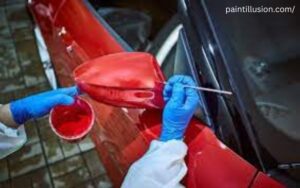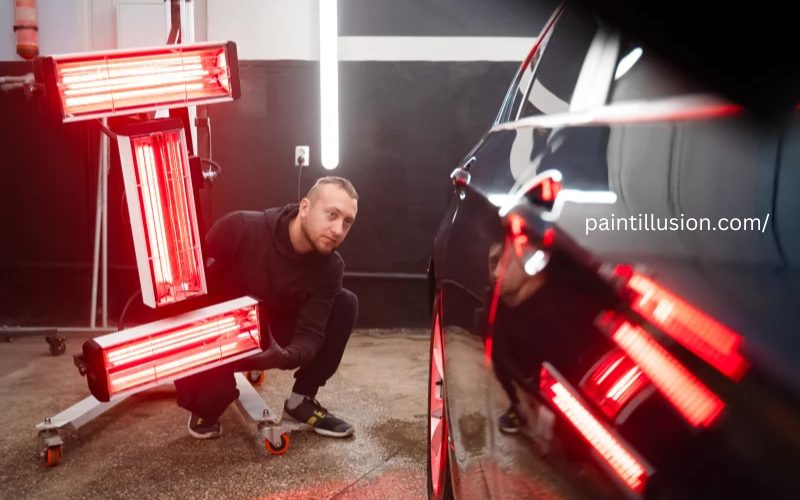Goo Gone is a popular household cleaner that is known for its powerful adhesive removal properties. It is widely used to remove sticky residue from various surfaces such as glass, plastic, and metal. However, when it comes to using Goo Gone on car paint, there are certain factors that need to be taken into consideration to ensure the safety of your vehicle’s paint job.
Understanding the potential risks to car paint
Car paint is delicate and can easily be damaged by harsh chemicals or abrasive substances. The paint job not only adds aesthetic appeal to your vehicle but also serves as a protective layer against the elements. Therefore, it is important to understand the potential risks involved in using Goo Gone on car paint.
One of the main risks is the possibility of Goo Gone causing discoloration or fading of the paint. The chemicals in Goo Gone can be strong and may react with certain types of paint, leading to unwanted changes in color. Additionally, if not used properly, Goo Gone can also cause damage to the clear coat, resulting in a dull or hazy appearance.
Is Goo Gone safe for car paint?
While Goo Gone is generally safe to use on many surfaces, including glass and plastic, its use on car paint requires caution. The safety of using Goo Gone on car paint depends on various factors, such as the type of paint, the condition of the paint, and the method of application.
In general, Goo Gone should be used sparingly and only on small, localized areas. It is best to perform a patch test on an inconspicuous area of the car paint before using Goo Gone on a larger surface. This will help you determine if any adverse reactions occur.

Factors to consider before using Goo Gone on car paint
Before using Goo Gone on your car paint, it is important to consider a few factors. Firstly, check the type of paint used on your vehicle. Some types of paint may be more sensitive to chemicals and require extra care. It is also crucial to assess the condition of the paint. If the paint is already damaged or has scratches, using Goo Gone may exacerbate the problem.
Another factor to consider is the age of the paint. Older paint jobs may be more susceptible to damage, and using Goo Gone could lead to further deterioration. Lastly, take into account the amount of residue or adhesive that needs to be removed. If it is a small and manageable amount, alternative methods may be less risky.
Tips for safely using Goo Gone on car paint
To minimize the risks associated with using Goo Gone on car paint, follow these tips for safe and effective application:
- Start by applying a small amount of Goo Gone onto a clean and soft cloth.
- Gently rub the affected area in a circular motion, being careful not to apply too much pressure.
- Gradually increase the intensity of rubbing if necessary, but always monitor the paint for any adverse reactions.
- After removing the adhesive residue, thoroughly clean the area with a mild soap and water solution to remove any remaining Goo Gone residue.
- Finally, apply a protective wax or sealant to the treated area to restore shine and protect the paint.
By following these tips, you can minimize the potential risks and help ensure the safety of your car’s paint job when using Goo Gone.
Alternatives to Goo Gone for removing sticky residue from car paint
If you are hesitant to use Goo Gone on your car paint or if you have determined that it may not be safe for your particular vehicle, there are alternative methods for removing sticky residue from car paint.
One effective alternative is to use a mixture of warm water and mild dish soap. Simply dampen a soft cloth with the soapy water and gently rub the affected area. This method is generally safe for most types of car paint and poses minimal risk.
Another alternative is to use isopropyl alcohol. Apply a small amount of alcohol onto a clean cloth and gently rub the sticky residue until it dissolves. However, be cautious when using alcohol, as it can potentially strip the paint if applied excessively or with too much pressure.
Precautions to take when using Goo Gone on car paint
If you choose to use Goo Gone on your car paint, it is important to take certain precautions to minimize the risks and protect your vehicle. Here are some precautions to keep in mind:
- Always read and follow the instructions provided by the manufacturer of Goo Gone.
- Perform a patch test on an inconspicuous area of the car paint before applying Goo Gone to a larger surface.
- Use Goo Gone sparingly and avoid applying it to large areas or the entire vehicle.
- Avoid using excessive pressure when rubbing the affected area to prevent damage to the paint.
- After using Goo Gone, thoroughly clean the area with mild soap and water to remove any residue.
By taking these precautions, you can reduce the chances of damaging your car paint and achieve effective adhesive removal with Goo Gone.
How to properly care for car paint after using Goo Gone
After using Goo Gone or any other adhesive remover on your car paint, it is crucial to properly care for the paint to maintain its condition and appearance. Here are some steps to follow:
- Thoroughly rinse the treated area with clean water to remove any remaining Goo Gone residue.
- Wash the entire vehicle using a mild car wash soap and a soft sponge or cloth.
- Dry the car thoroughly with a microfiber towel to prevent water spots.
- Apply a high-quality automotive wax or sealant to protect the paint and enhance its shine.
- Regularly wash and wax your car to maintain the protective layer and prevent future buildup of adhesive residue.
By following these steps, you can ensure that your car’s paint remains in good condition and protected after using Goo Gone.
Expert opinions on Goo Gone and its impact on car paint
Experts in the automotive industry have varying opinions on the use of Goo Gone on car paint. Some believe that when used properly and with caution, Goo Gone can be safe for car paint. They emphasize the importance of patch testing and using the product sparingly.
However, others caution against using Goo Gone on car paint altogether. They argue that the risks outweigh the benefits, especially considering the potential for discoloration or damage to the clear coat.
Ultimately, it is important to consider these expert opinions and make an informed decision based on the specific factors of your car paint and the adhesive residue you need to remove.
Conclusion
In conclusion, Goo Gone can be safe for car paint if used carefully and with caution. However, it is important to understand the potential risks and take necessary precautions to minimize any damage. Factors such as the type and condition of the paint, as well as the amount of residue to be removed, should be considered before using Goo Gone. If you are unsure or concerned about using Goo Gone on your car paint, there are alternative methods available. Remember to always patch test, use sparingly, and properly care for your car’s paint after using Goo Gone to maintain its appearance and protection.


I truly enjoy reading on this website , it has got wonderful posts.